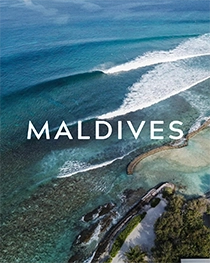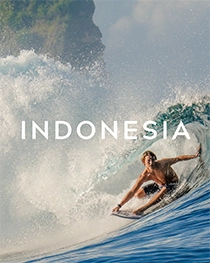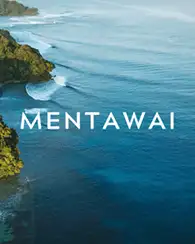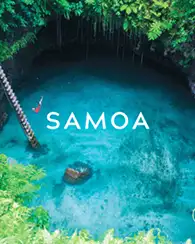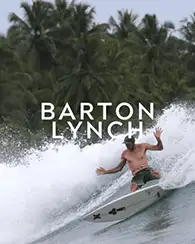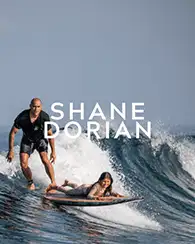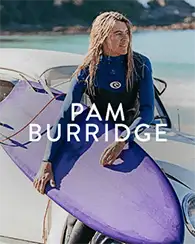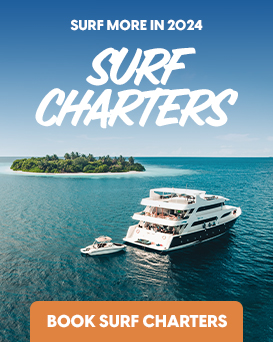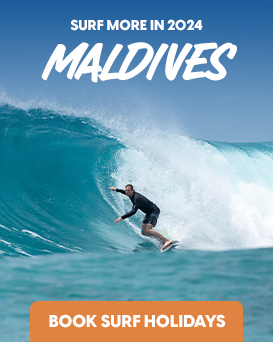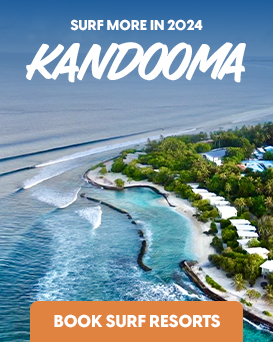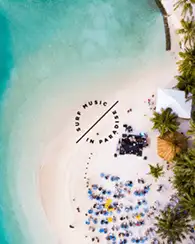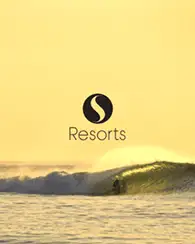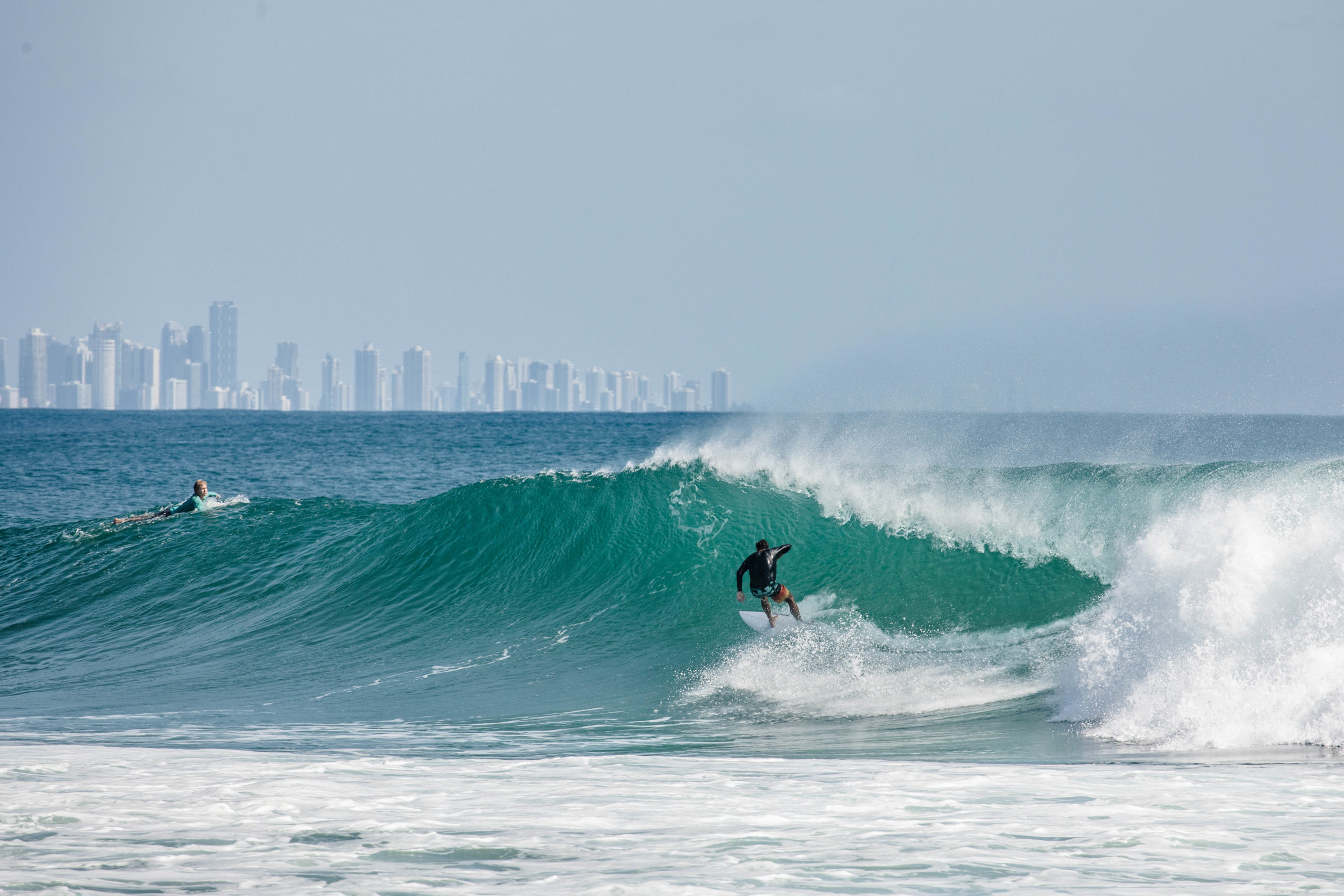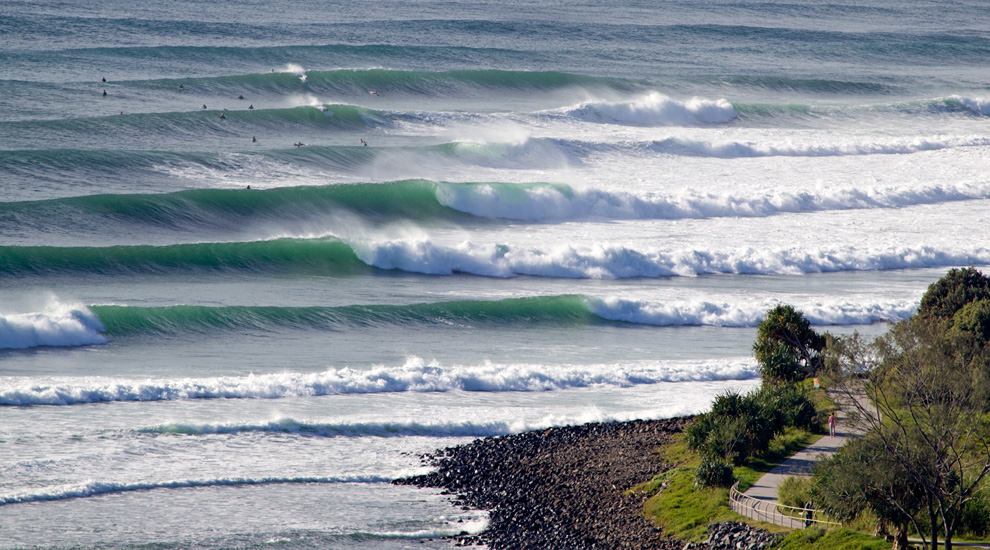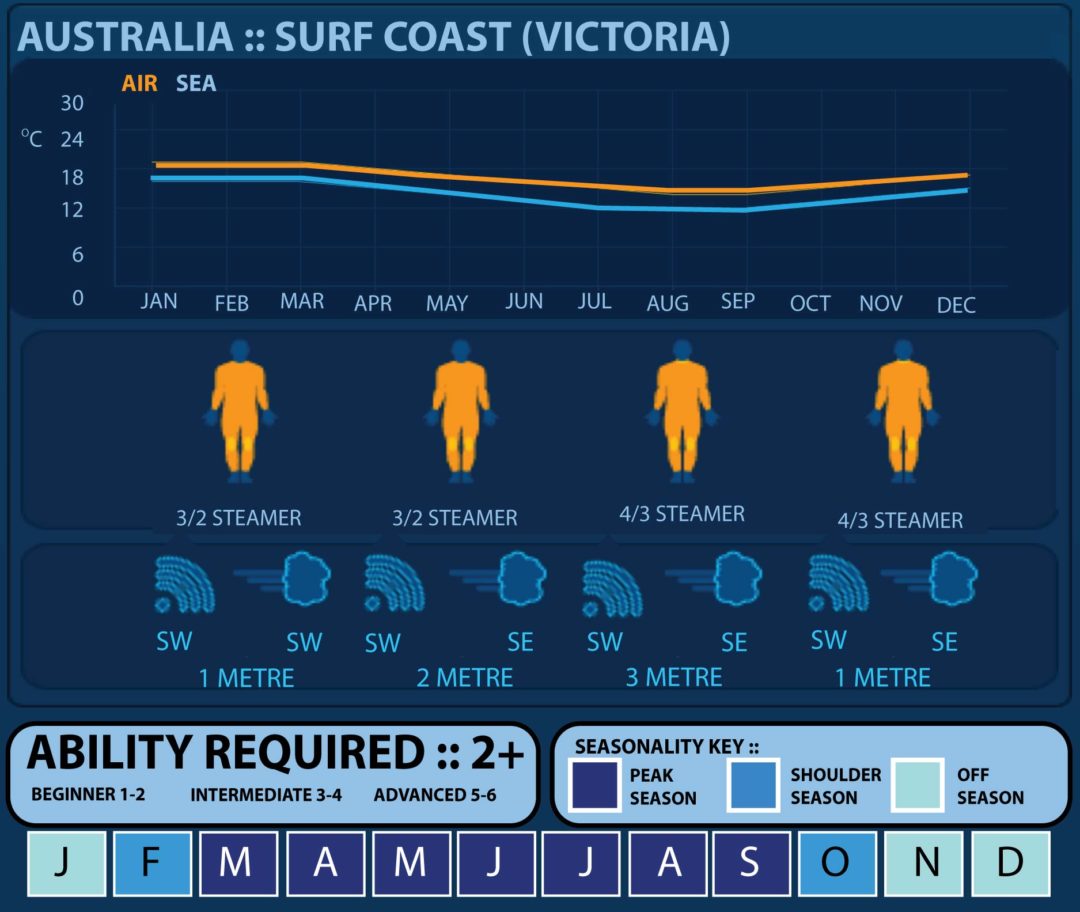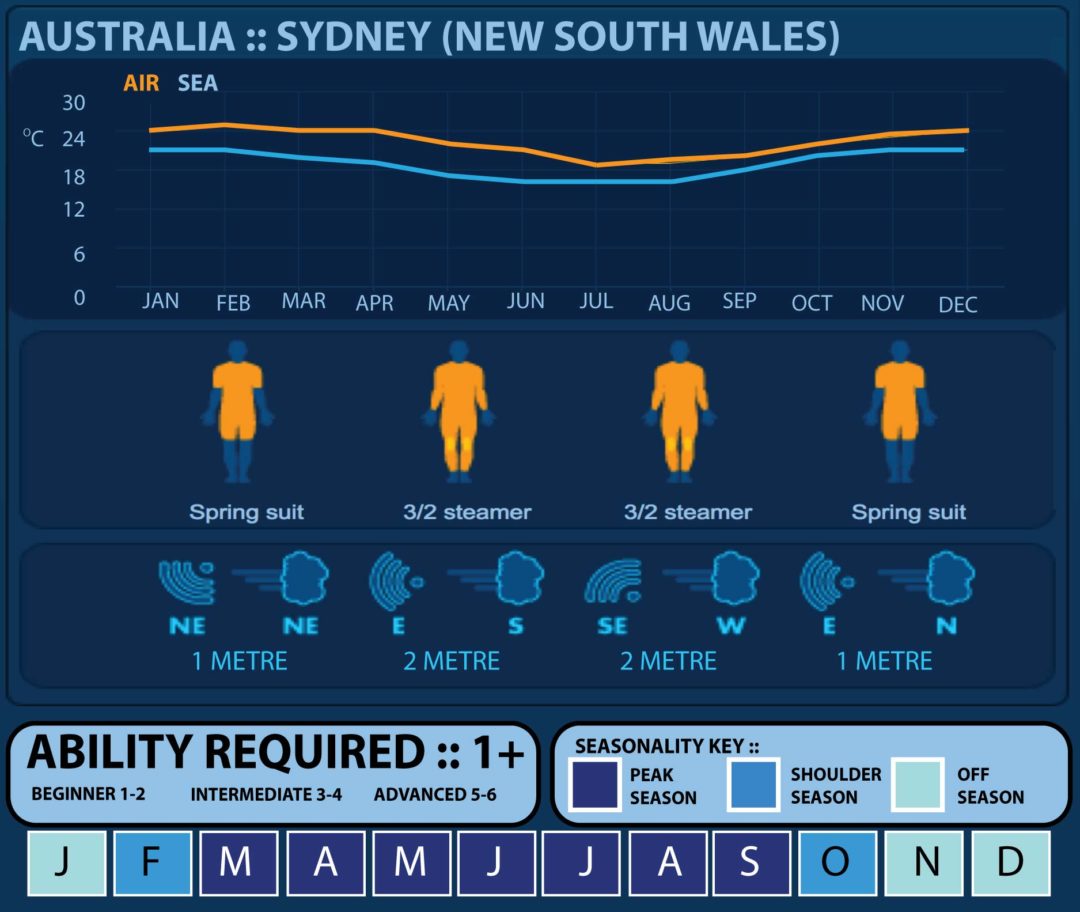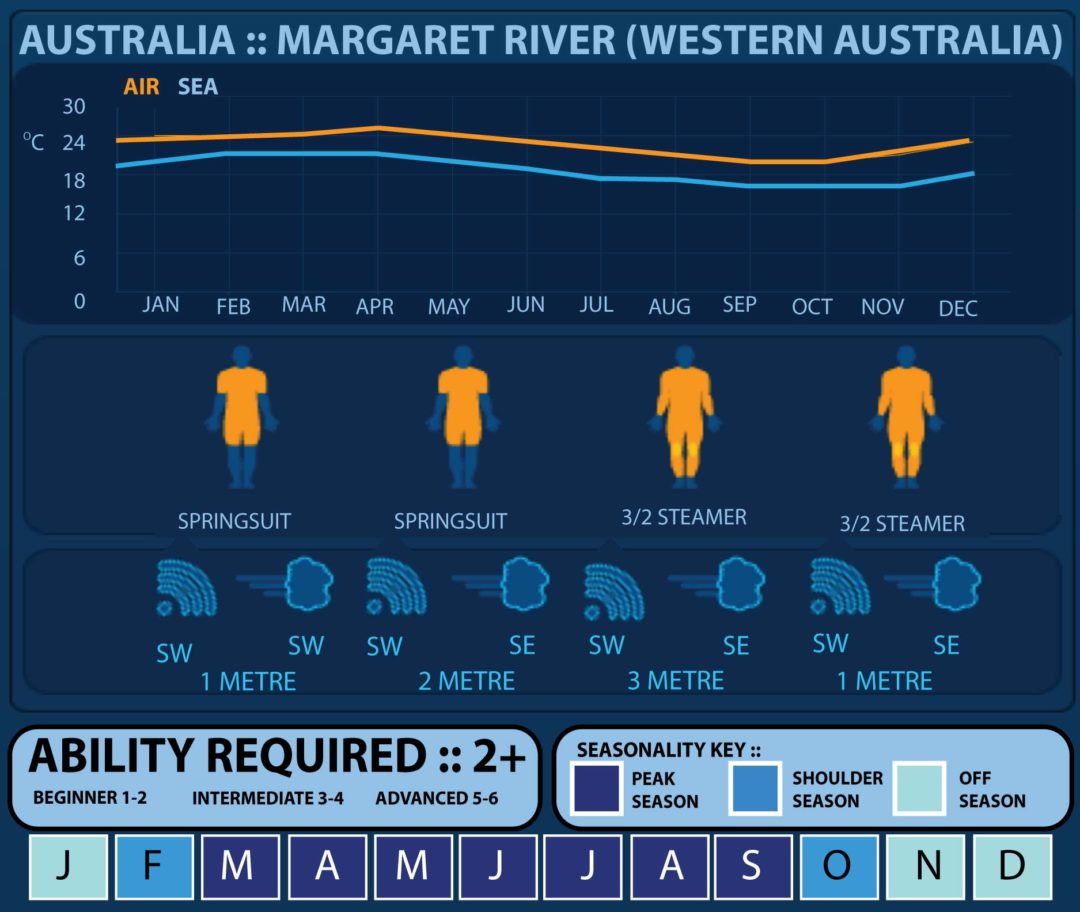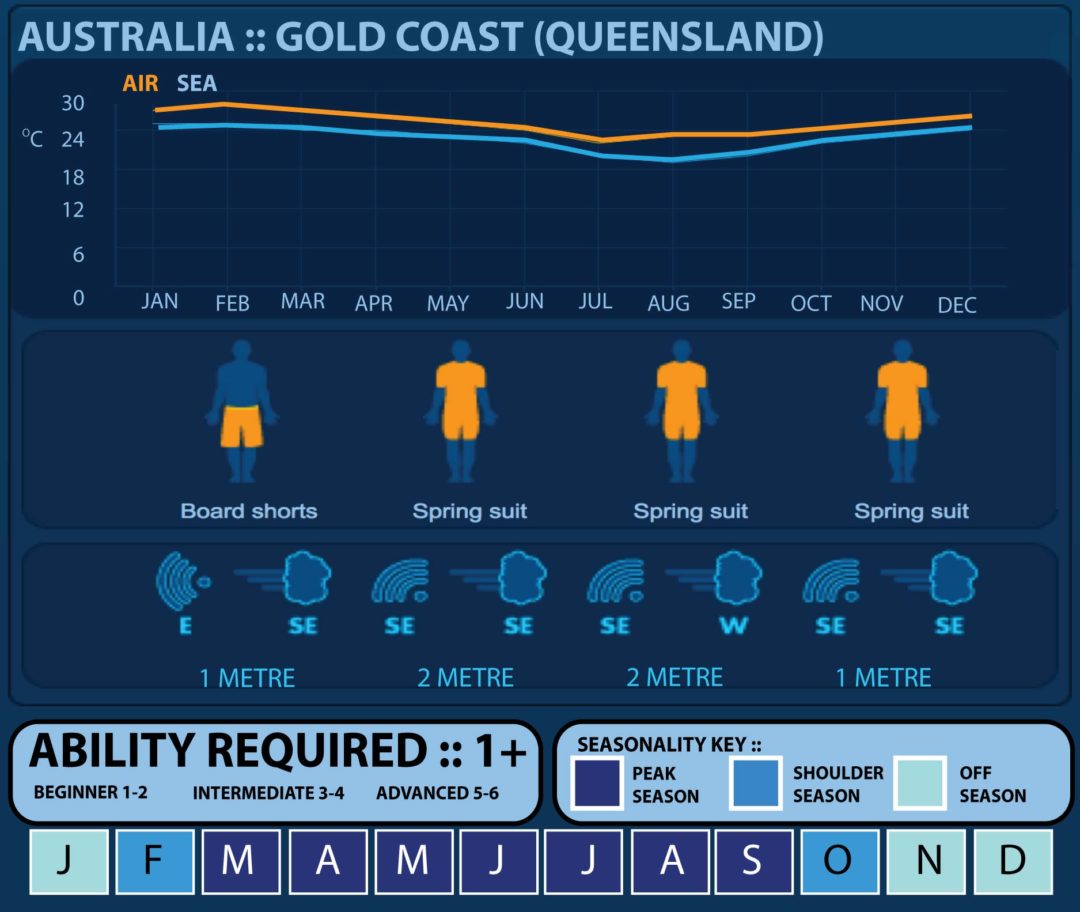Australia Surf Travel Guide
From the raw power of Western Australia to the the groomed pointbreaks of Queensland, the city beaches of Sydney and the cold water wonders of Victoria , there is every type of wave for every kind of surfer in Australia. No other country offers a surf adventure with such variety, consistency and beauty and no other nation puts the surfing lifestyle at its very centre.
What we love
Huge variety of waves for every type of surfer.
Hosts some of the best, and most iconic, breaks in the surfing world.
Cosmopolitan cities, remote deserts, tropical rainforests and incredible wildlife make this a unique surf and adventure destination.
Surfing pioneer country.
Queensland
Queensland, Australia, has long been the destination of many a surfer’s search for the perfect wave. There’s the Gold Coast located at the extreme southern end of the state at the Queensland/New South Wales border; there’s the Sunshine Coast, stretching north of Brisbane to Double Island Point, just past Noosa; finally, there are the islands. These include the near shore islands off the Gold and Sunshine Coasts (namely Straddie, Fraser and others) up to and including the many small islands and cays offshore from Gladstone and up to Cape Yorke.
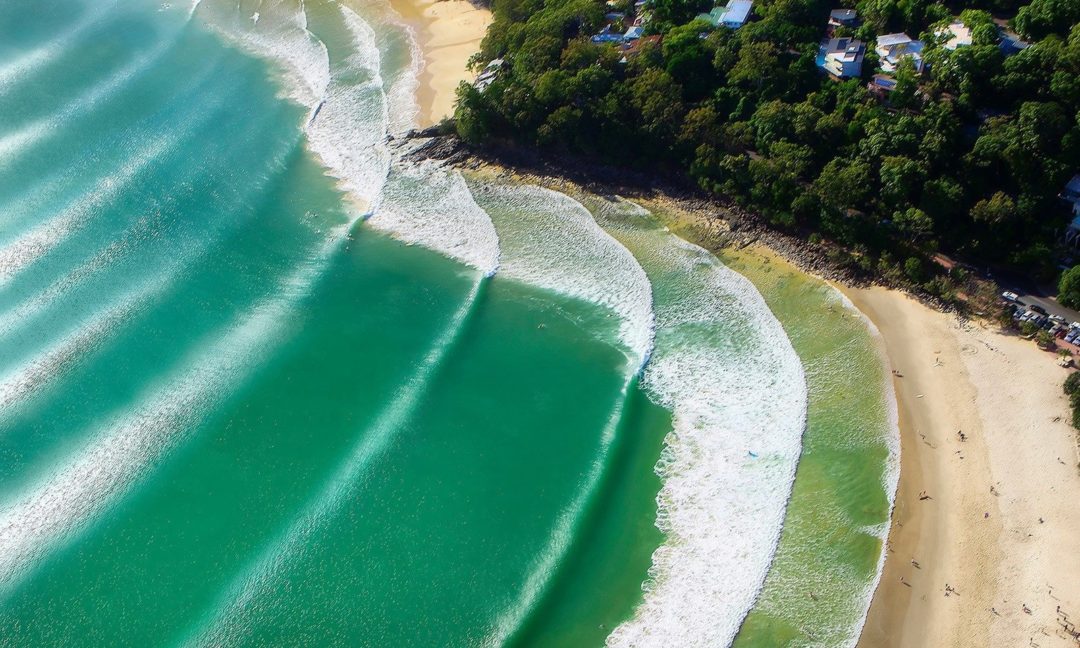

Noosa
The iconic First Point at Noosa is a perfect example of what a point break should be. With the stunning backdrop of the bush and boulders, swells from the South east to North East will wrap on to the sand and rock contours at the perfect peel angle. Depending on the size of swell waves vary from perfect peelers for long boards on east trade swells up to draining barrels on the more powerful cyclone swells. Best season in December to April for regular trade swells and occasional cyclone swells.
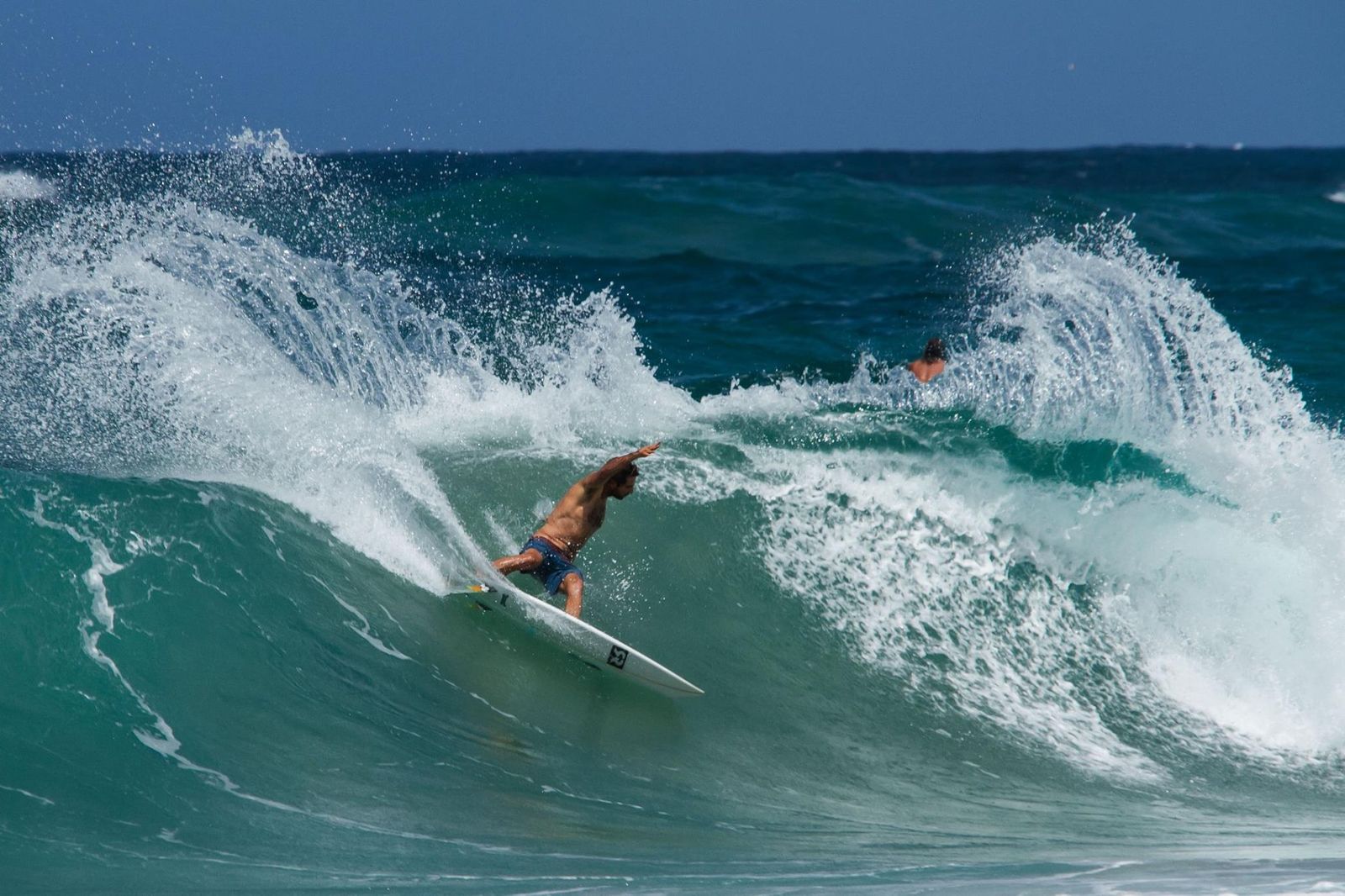

Duranbah
D’bah is arguably one of the most consistent high-quality beach breaks in Australia. If it’s flat at D’bah then you can bet there isn’t a rideable wave within a few hundred kilometre radius.
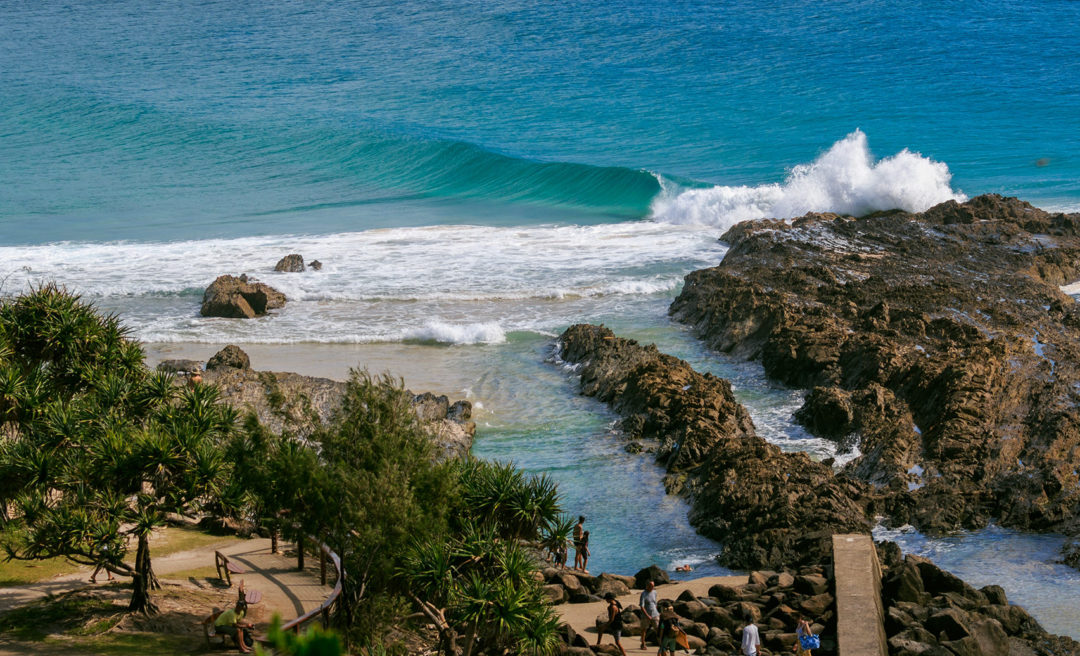

Snapper Rocks aka the Superbank
is the Gold Coast’s premier wave. On a good day when the sand is in all the right places you can take off behind the rock at Snapper and slingshot into a beautifully cylindrical backdoor section before performing an array of high performance manuevres on an endless wall or just sit in the tube the whole way through Rainbow Bay and into Greenmount all pending the state of the sand bank and direction of the swell.
New South Wales
The state of New South Wales offers the complete East Coast experience! Surf everything from warm water and long sandy right point breaks on the North Coast through to consistent beachies and humming city life of Newcastle and Sydney. Or head down the South Coast for rock slabs and thick barrels, sapphire clean waters and uncrowded beaches.
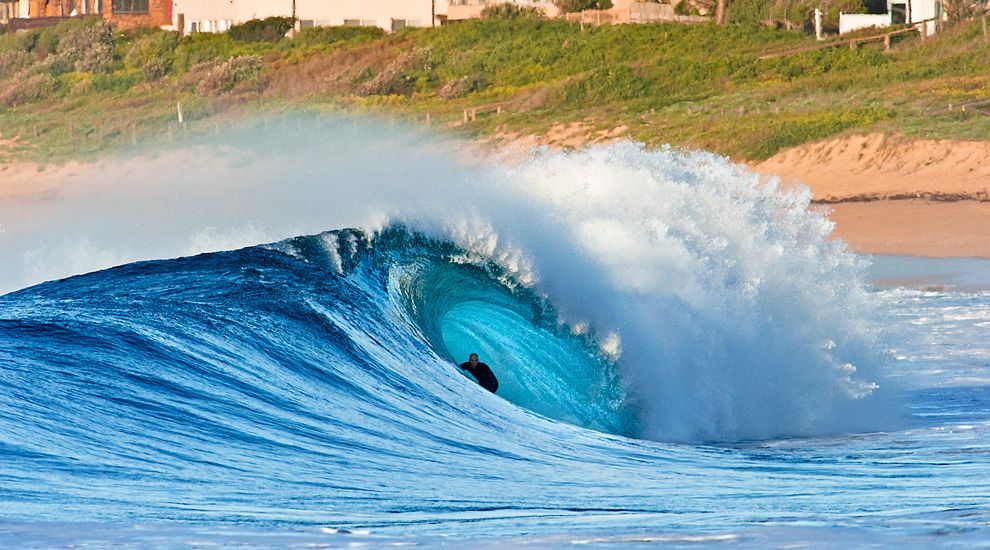

Sydney is blessed with scores of surfable points and reefs, some of the best being Narrabeen, Dee Why, Curl Curl, Manly, Cronulla, Maroubra and Bondi.
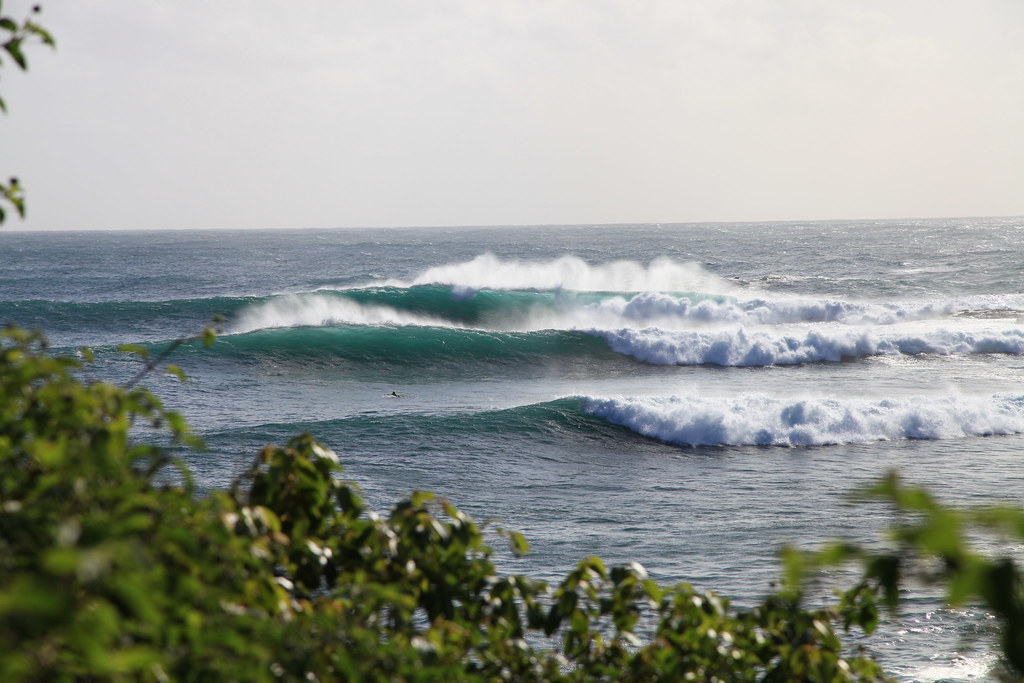

New South Wales
Sandon Point, Windang Island and The Boneyard are quality, well-known reef breaks, while further south Black Rock, Ulladulla Bombie and Merimbula Bar rival any in the world for quality.
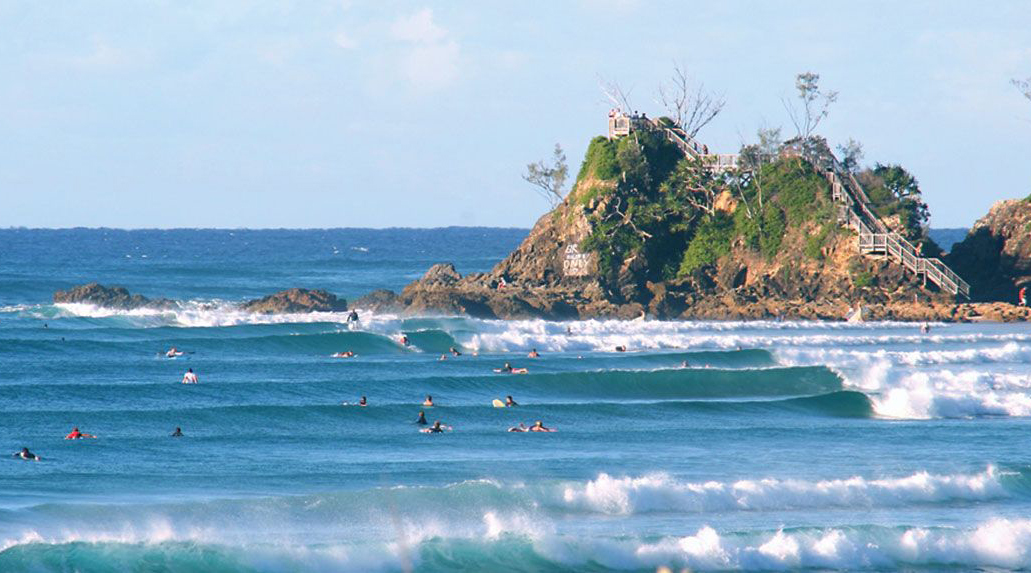

The Pass (Byron Bay)
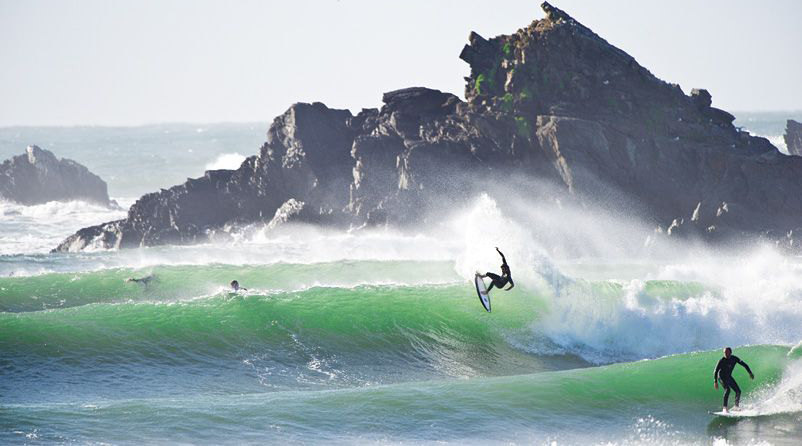

Broken Head Point
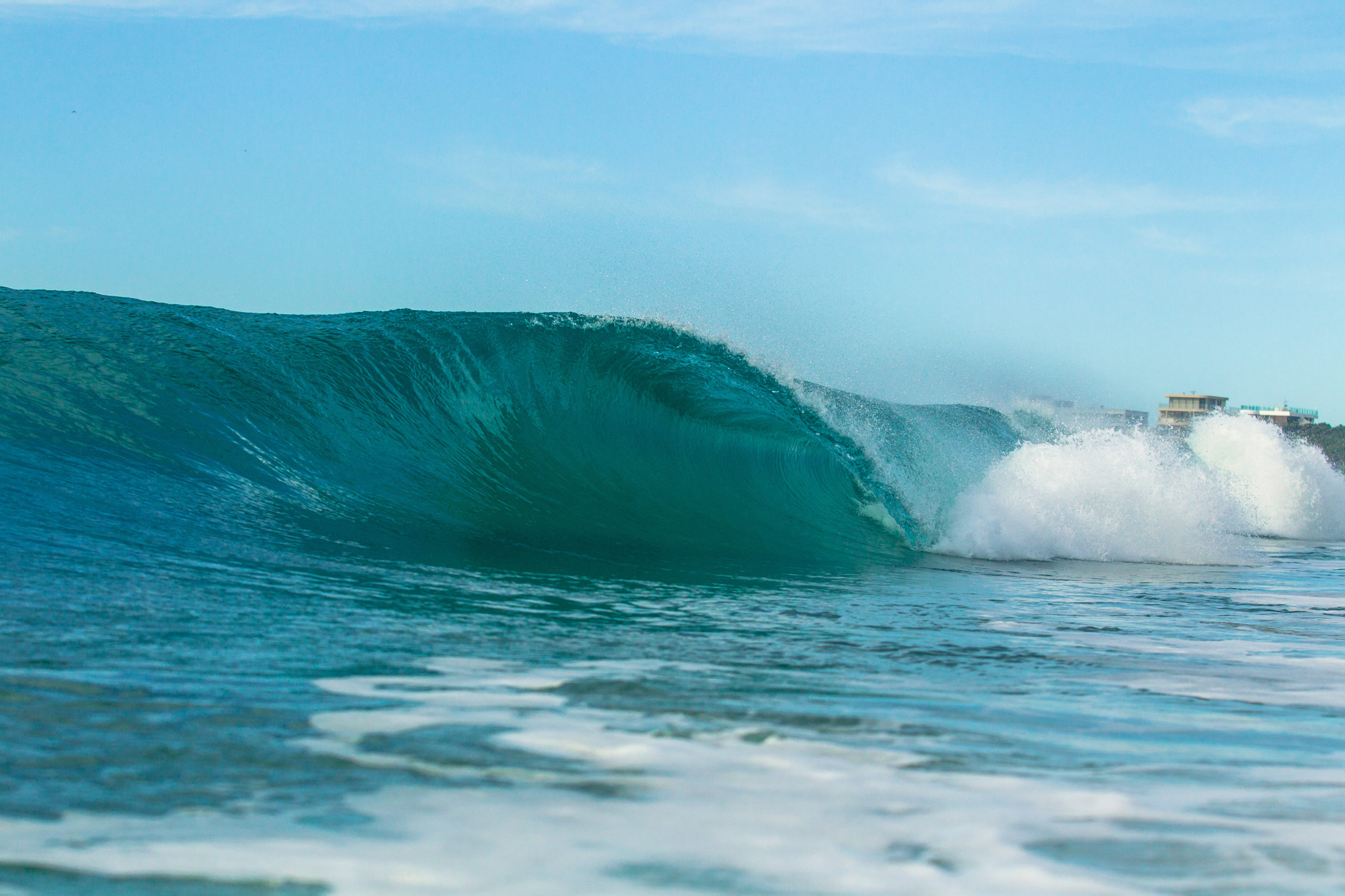

NSW North Coast
Hundreds of beaches, long rocky points and gin clear water. Something for every surfer. Consistent Easterly trade swells in summer, pulsing South groundswells in Autumn and Winter. Never too hot, not too cold, this is surfing’s Golidilocks Zone!
Victoria
Despite its southerly latitude, Victoria holds a legendary position in Australian Surf travel folklore. Victoria’s has an entire region named ‘The Surf Coast’, where powerful Southern Ocean groundswells peel rhythmically down long limestone points and reef breaks. From Geelong west to Cape Otway the coast is angled perfectly for prevailing winds and swells to interact and create long right walls.
However, there are plenty of other surf regions in Victoria, the westernmost Shipwreck Coast is unsurprisingly know for big waves and deep water reef breaks although many fine beach breaks abound. East of Melbourne the Mornington Peninsula faces in to the SW swell maximising wave sizes, which is ideal in summer when the warm northerly winds blow offshore. Phillip Island offers some epic rocky point breaks and long empty beaches. The eastern end of the state enjoys both SW Southern Ocean swells and SE Tasman Sea swells along miles of empty beaches.
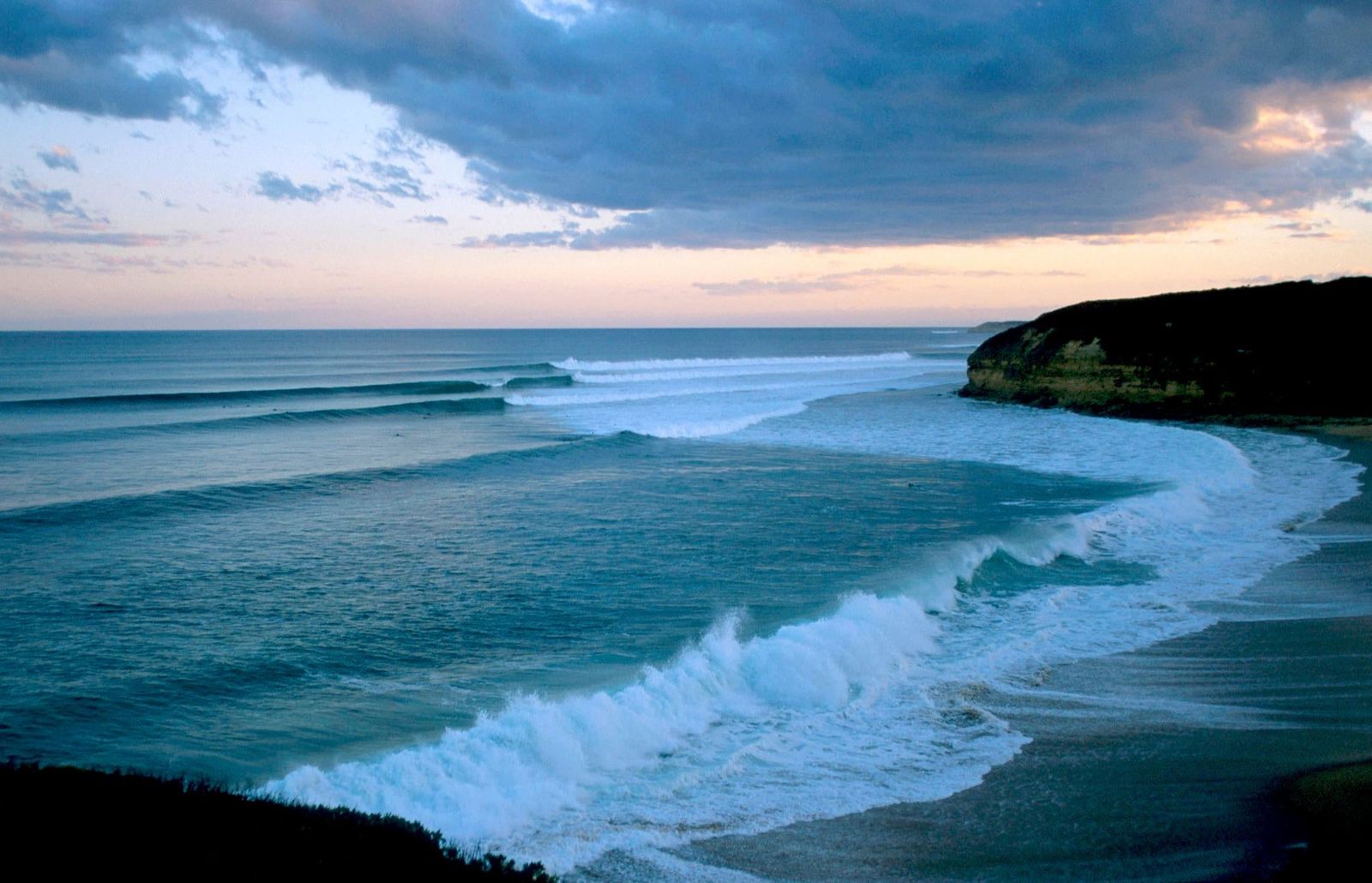

Bells Beach
(photo by Brett Stanley)
Despite the name, its not a beach break, this legendary right breaks across a broad limestone platform. The contours of the reef create open faced walls, the faces may not be steep but offer a perfect canvas for smooth rail to rail surfing. Can handle real size while still holding a good shape.
In bigger swells the waves will push wider, ending on the sharp rocks of ‘The Button’.
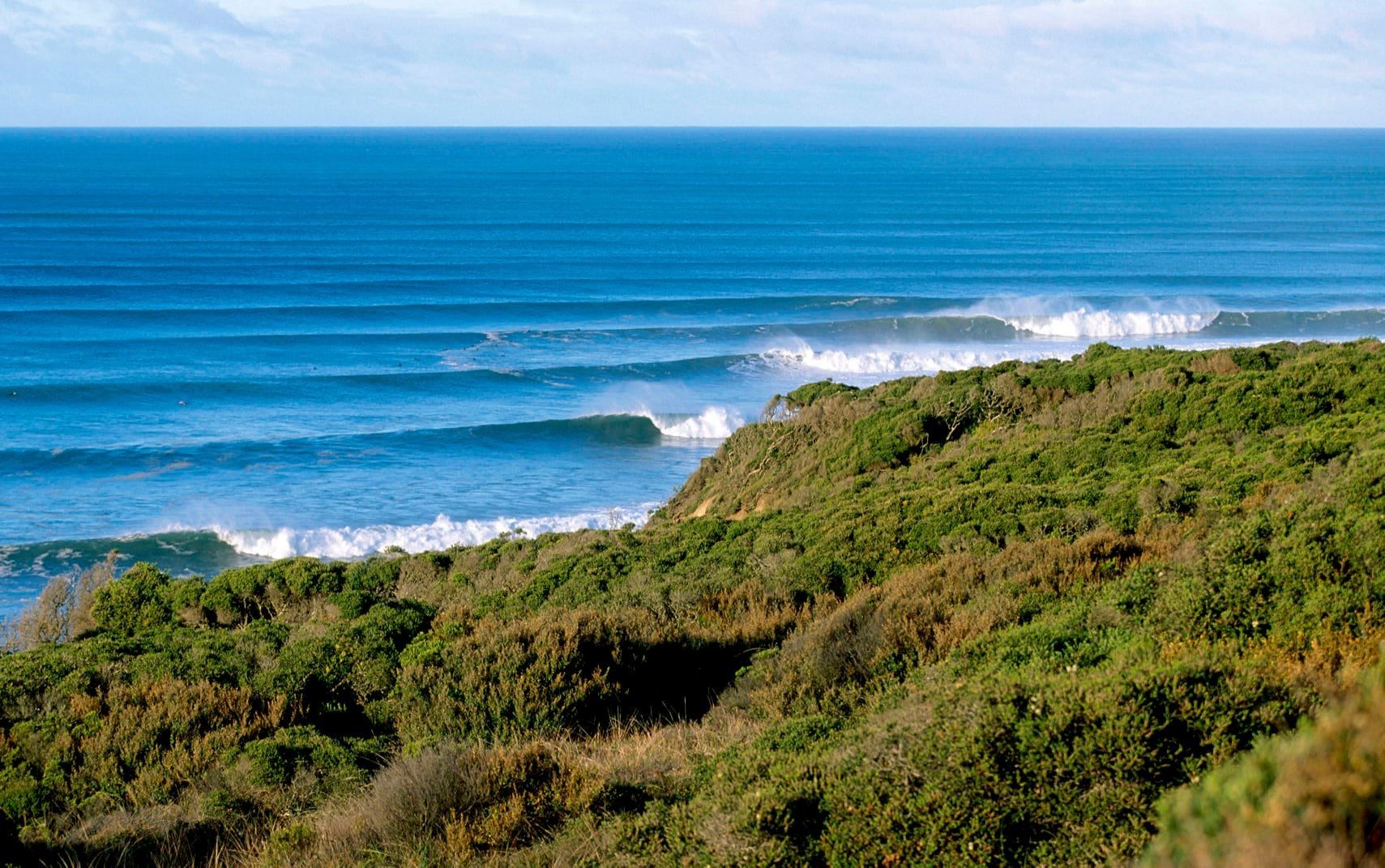

Winkipop
(photo by Brett Stanley)
The next point down from Bells, Winkipop is better known for classic down the line walls with occasional barrel sections. A steeper, faster high performance wave. Can still handle good size and works in similar conditions to Bells under strong SW ground swell and winds from west around to northern quadrant.
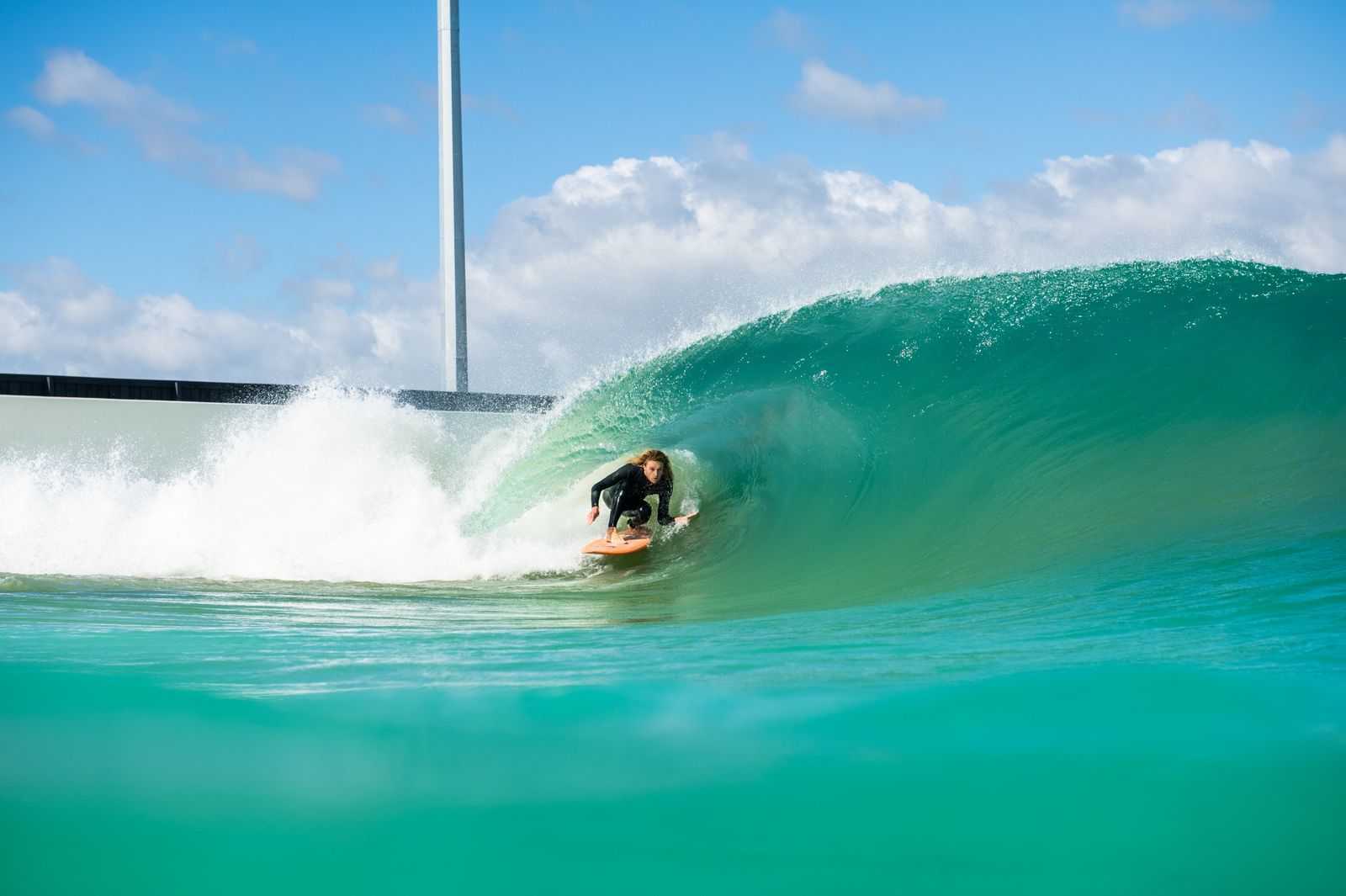

URBNsurf, Tullamarine
Australia’s most consistent wave, the wave pool at Tullamarine in Melbourne’s Northern Suburbs is pumping out perfect waves from dawn to well after sunset, year round. Choose a session to suit your skills from beginners through to the barrels of the expert settings.
Western Australia
A huge state with multiple surfing coasts from East to west and up to the remote North West. The turquoise waters around Esperance offer a great selection of white sand beachbreaks and a few reefs. There is an abundance of isolated beaches as you head East toward Albany then Denmark and Walpole. For the chargers there are some serious slabs on the WA South coasts including “The Right’. The South West from Cape Leewin to Naturaliste is one of the most wave rich coast in Australia, including classics like Margaret River, Gracetown and Yallingup. Mandurah and Perth are blocked from direct swell by offshore reefs but still get fun beachbreaks. Rottnest Island is a destination in its own right and worth a visit with a surfboard. North from Perth the country opens up up to wide spaces and occasional epic waves. Although the distances can be great, it can be well worth the drive to Kalbarri, then Red Bluff, Gnaraloo and the Ningaloo reefs to Exmouth. The ultimate North West surf adventure is found amongst the incredibly remote Montebello Islands, offshore of the Pilbara
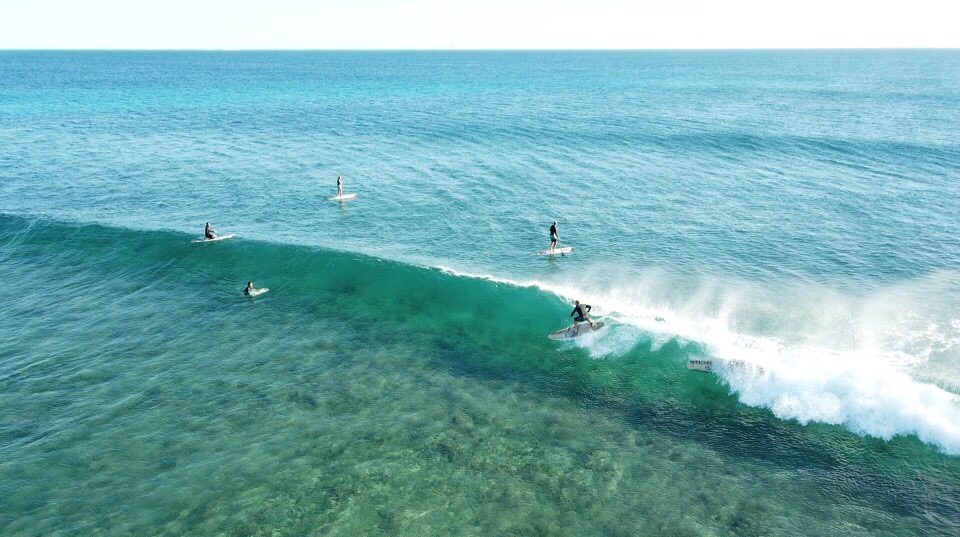

As you’re getting barrelled down the face of the wave you can see the coral and fish life teeming under your feet. The main left is shorter and punchy, growing down the line with a couple of turns before fading in to the channel. Gets hollower as the swell increases, a super fun wave with protection from the wind.
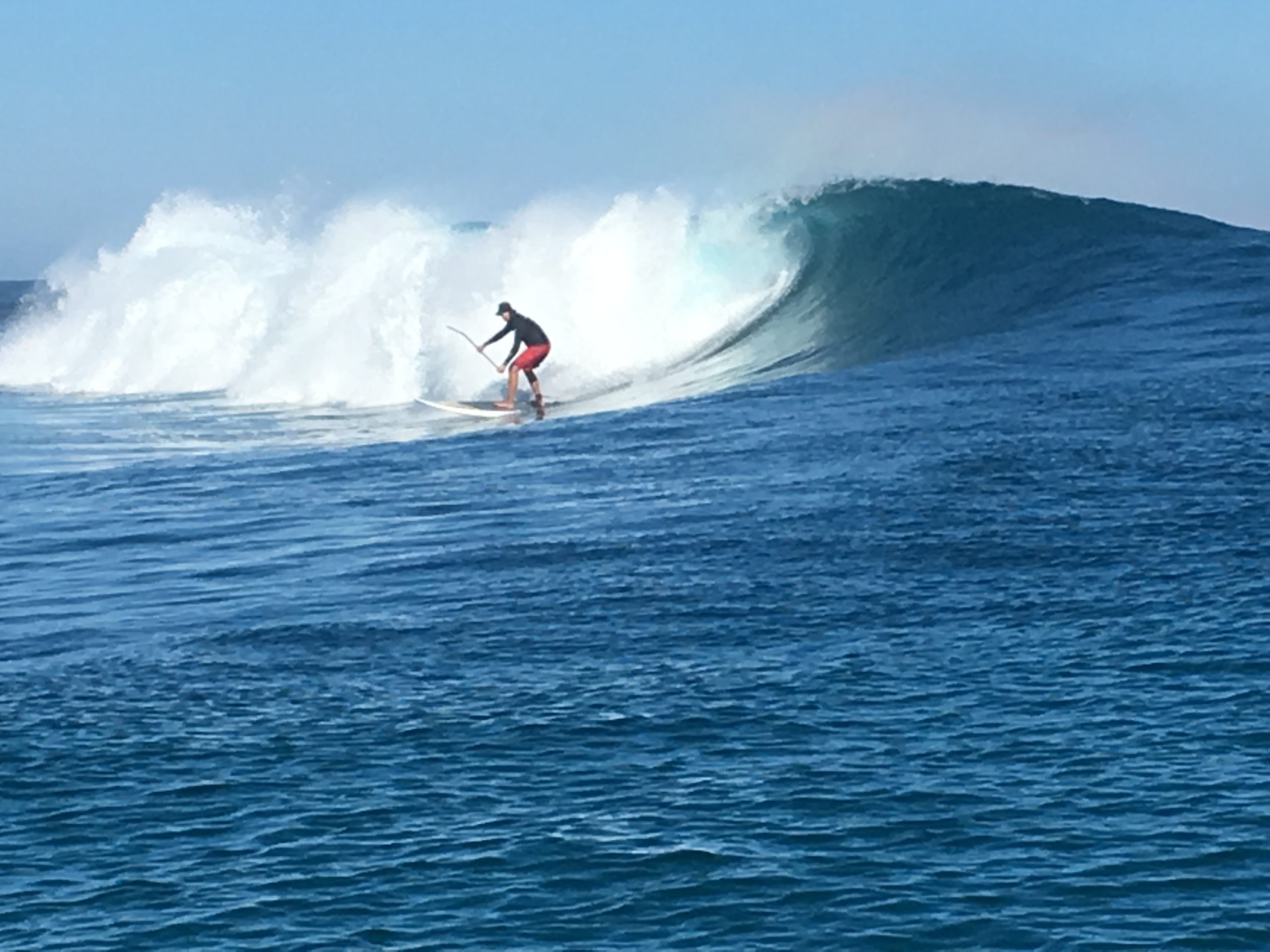

South of Bali and North of Gnaraloo, the Montebello Archipelago enjoys good exposure to groundswells from West to SW with the many reef passes and islets turning long period swells in to peeling perfection. Most of the waves are super mellow, playful, fun, with deep channels and reasonably forgiving reef. Then with size they become better suited to and cater for more experienced surfers. When smaller is ideal for longer boards or sups.
With the large variation in wind, tide and swell direction the waves also change constantly, so you don’t just get the same everyday.
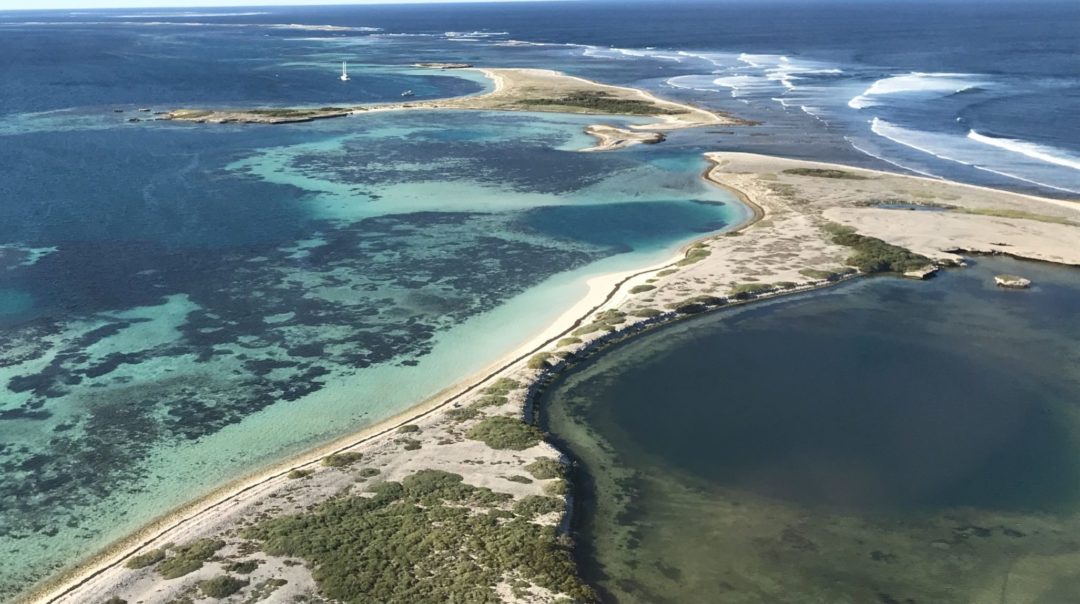

The limestone and coral reefs of the Abrolhos offer surfing options in a wide range of swell and wind combinations. Generally best during the Autumn season when the South West swells are pulsing and winds are lighter
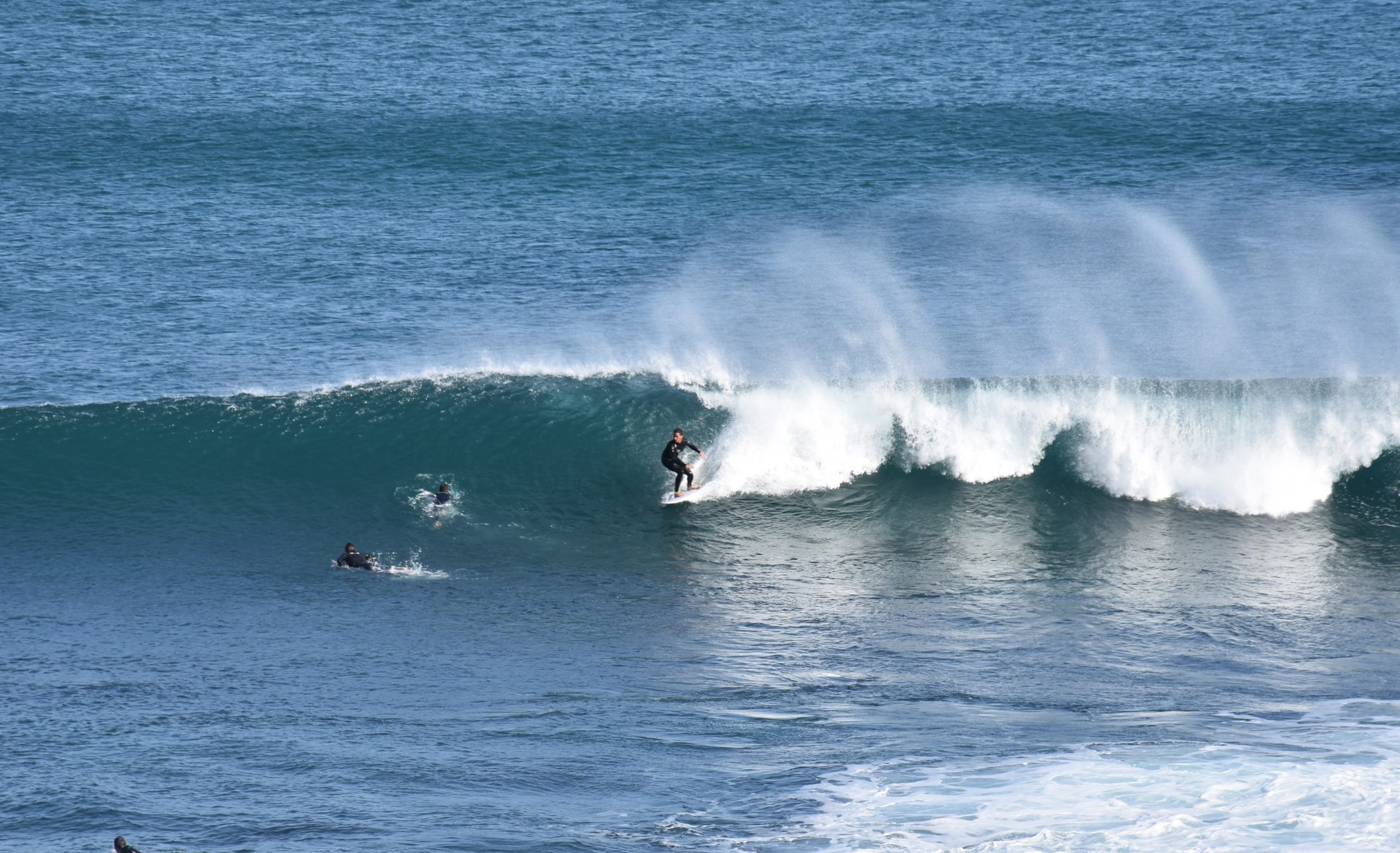

SW Western Australia
The secluded bay offers some great waves in a wide range of conditions, often more user friendly than the big name reefs breaks Carpark Rights offers rippable walls while the left off the point has long walls over sand and reef.
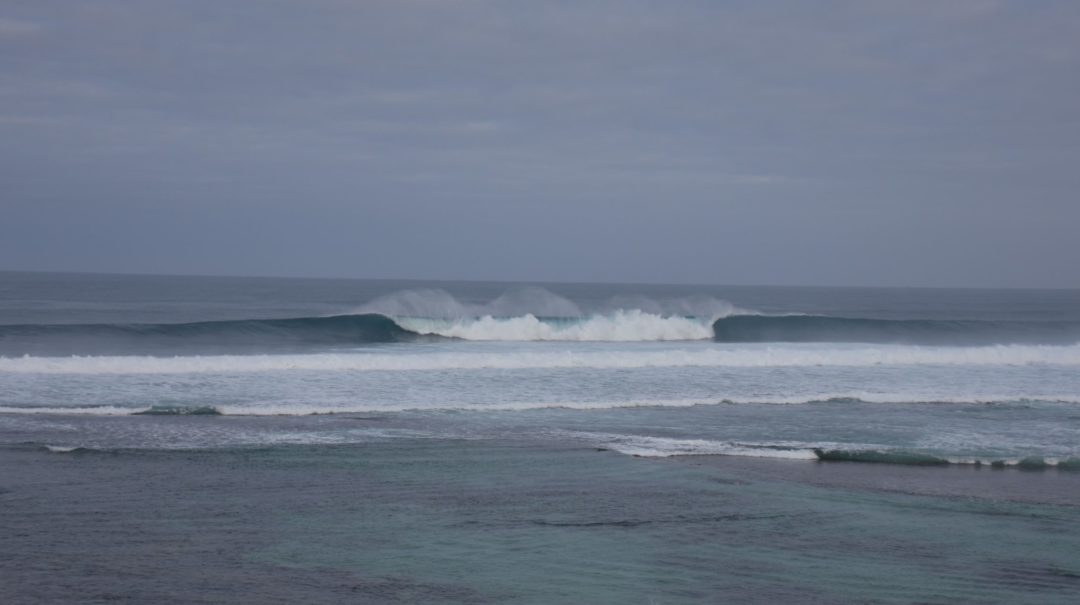

SW Western Australia
The broad limestone reefs at Yallingup are highly valued by surfers. Powerful Rights, Freight Train Lefts, different parts of the reef light up under varying swell directions. Able to handle real size!
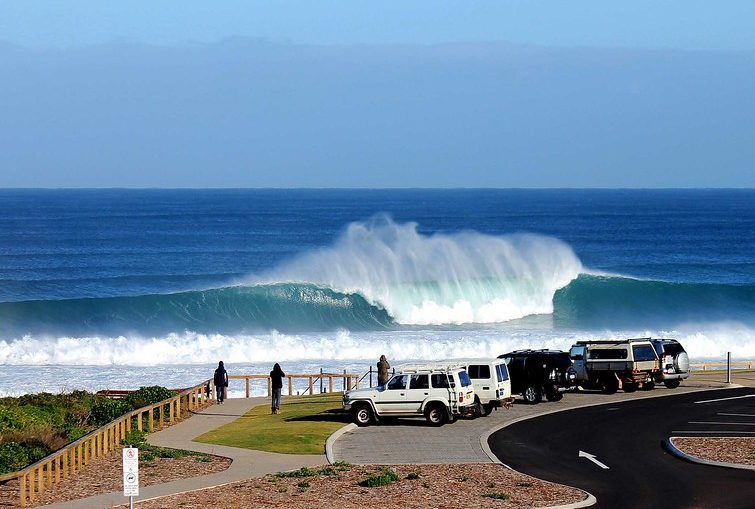

Margaret River – SW Western Australia
Surfers Point near Margaret River is internationally renowned as the best break in the area and home to the Margaret River Pro. Main Break offers a shorter right while the left handles all sizes. The South Side reefs offer long Rights without the attention of Main Break
South Australia
Although Adelaide is a surfless capital, there are epic waves to found on different parts of South Australian Coast. From East to West, the waves get arguably better as you head to the desert. The East facing Limestone Coast offers a great exposure to swell but can be plagues by onshore winds. Goolwa, Victor Harbour and the Mid Coast is the most popular with plenty of fun beachies and peeling reefs that work in a variety of conditions. Kangaroo Island offers remote solitude and great adventure potential. West of Adelaide the southern tips of the Yorke and Eyre Peninsulas are open to the swell with a variety of reefbreaks. However the West Coast of the Eyre Peninsula around to Cactus and beyond offer that classic arid wilderness with big and perfect waves. Don’t forget you will need to be pretty self sufficient in this remote region and always respect the locals!
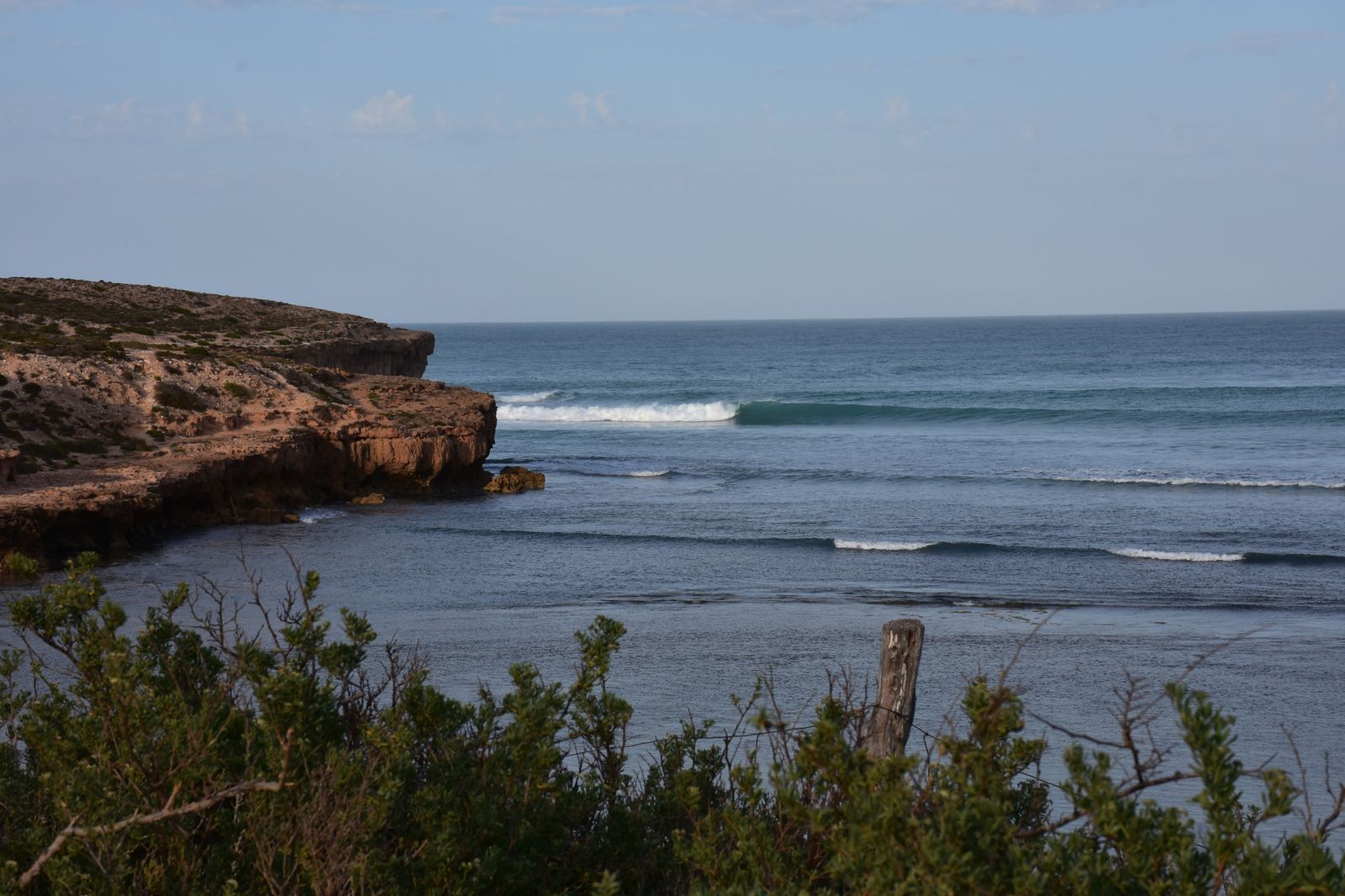

West Coast
On the edge of the Nullabor is a very special region for Australian surf culture. A variety of limestone reefs offer a series of world class waves well oriented to SW groundswells. Marine life abounds, including the large ones with sharp teeth. Search and you will discover!
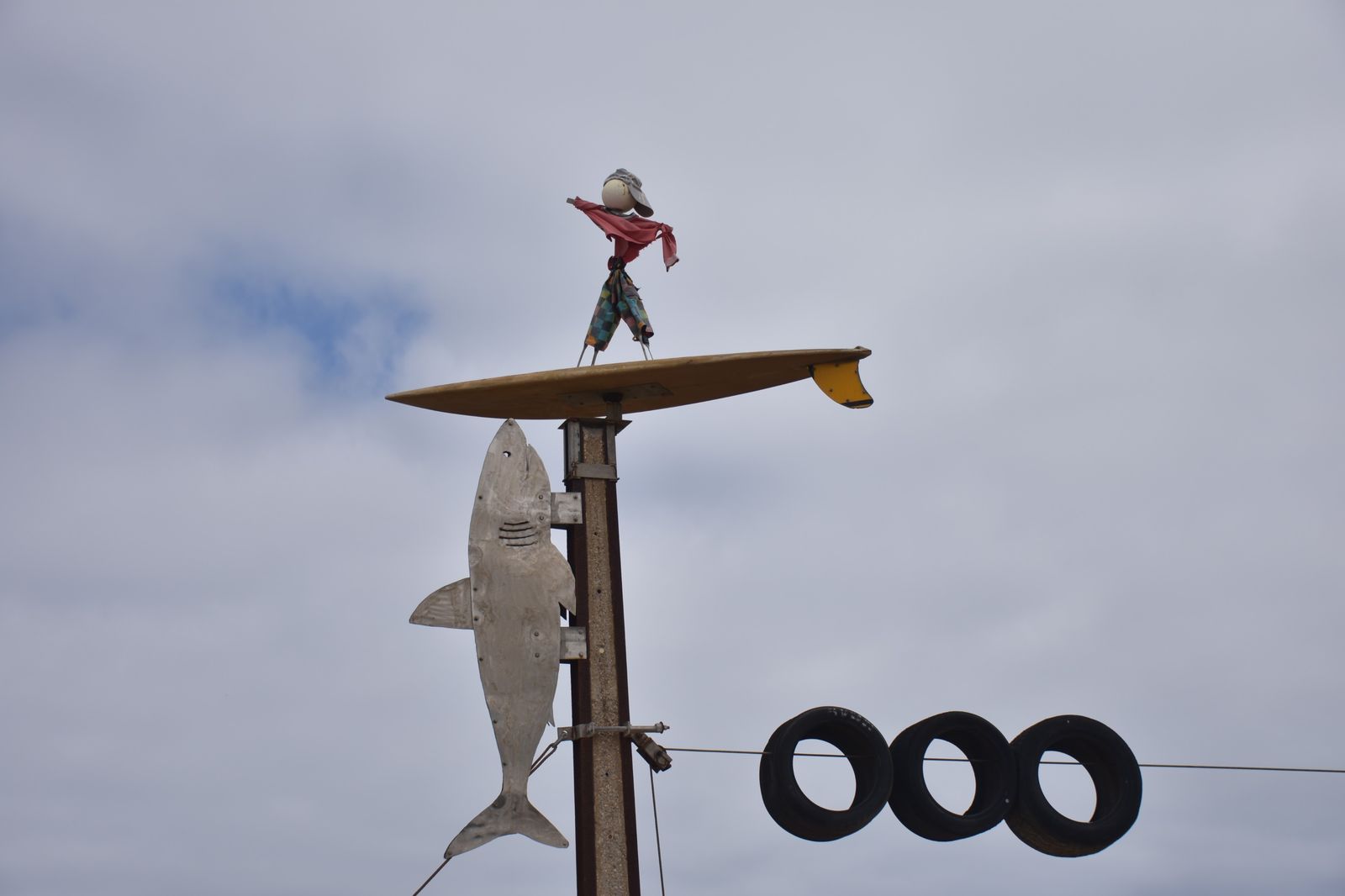

Eyre Peninsula
Home to some of South Australia’s greatest waves, the West and South facing coasts get plenty of swell. Home to a tight knit surf community, discretion and respect are essential!
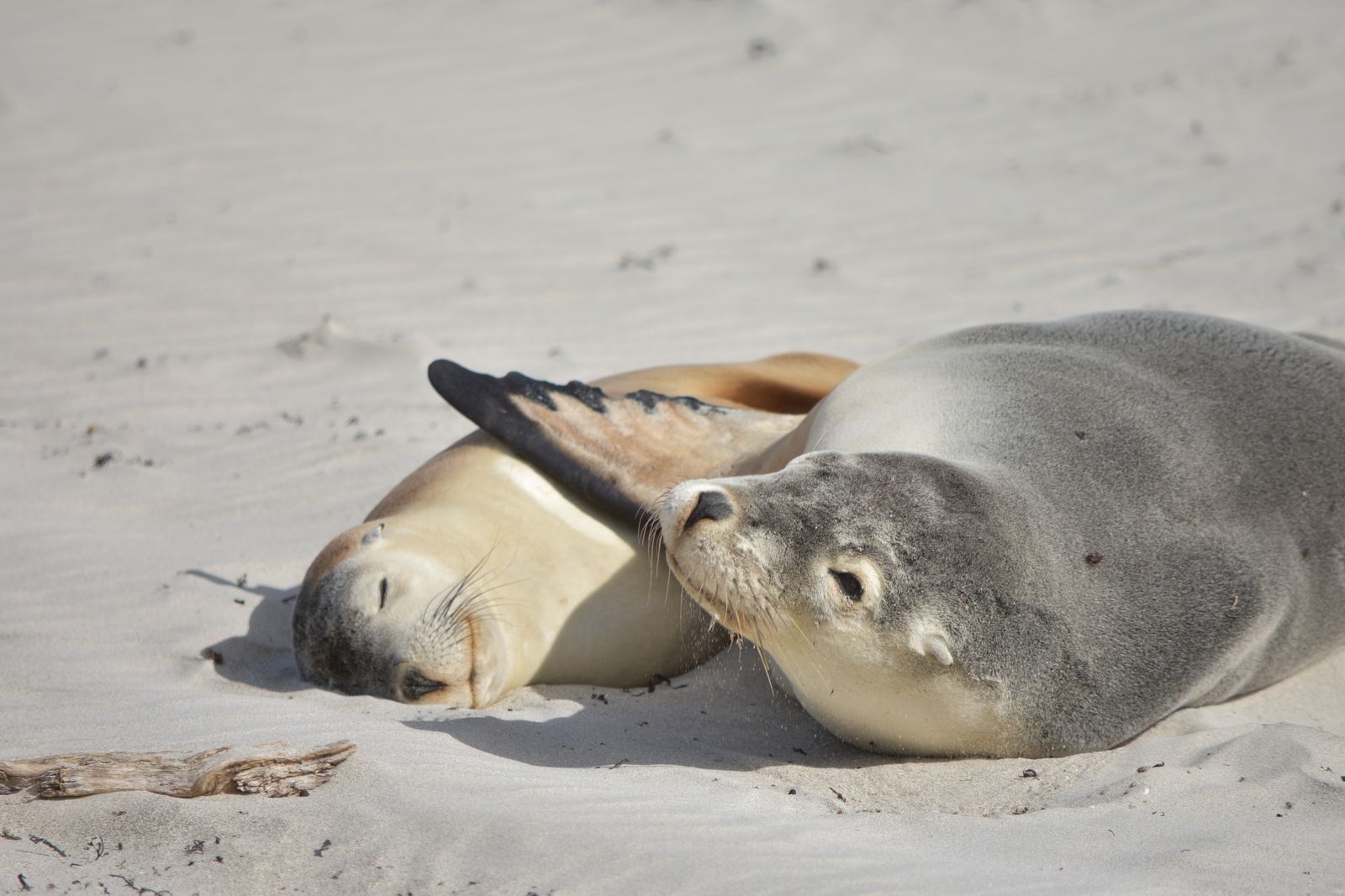

Kangaroo Island
Great exposure to the Southern Ocean means there is a lot of waves to found on this large island. The beach breaks can get good and there are a number of reefs that shape up nicely. The rocky reefs of the Western end are for experienced surfers only! Kangaroo Island is sparsely populated, there is plenty of opportunity to find a break to yourself. Wildlife abounds on both land and sea, always be aware that apex predators (aka Great White Sharks) patrol the waters off Kangaroo island.
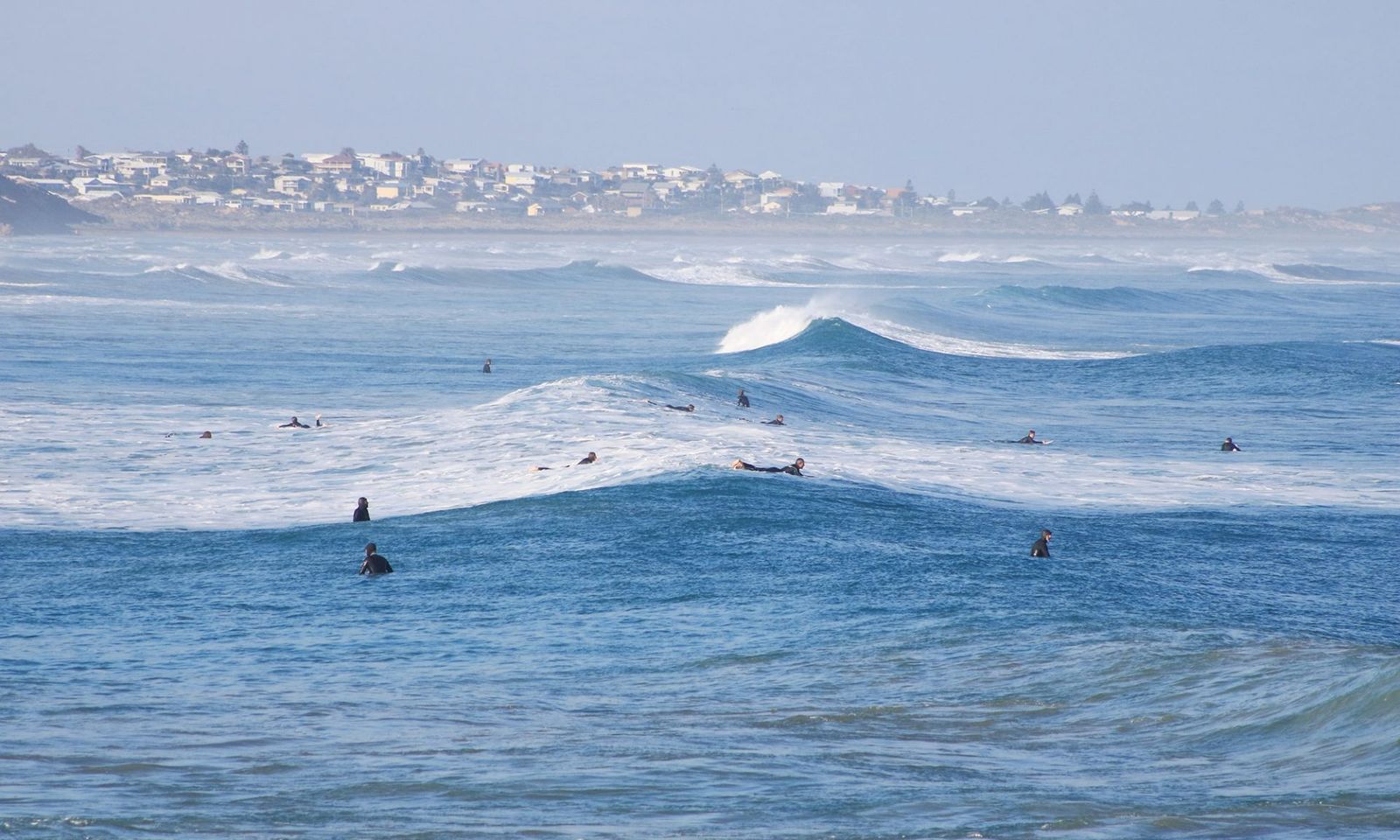

Middleton and Victor Harbour
A popular surf region with a variety of surf beaches to suit all levels. The broad beach of Goolwa offers beginners and intermediate surfers heaps of user friendly waves across a broad surf zone. nearby more challenging beaches include the wedging Knights beach and the exposed Waitpinga and Parsons receiving more swell from the south.
Tasmania
Located in the heart of the roaring 40’s, Tasmania can be a wild surfing experience. the West Coast receives the full fury of the Southern Ocean and so sometimes its about waiting for the swell and winds to ease to something surfable. The East Coast of the island is complex, with intricate and convoluted series of islands, peninsulas, capes, points, bays and hidden beaches. This can mean a lot of driving between spots, trying to find that spot that is maximising the swell and optimal winds. The legendary slab of Shipstern Bluff is a rare freak, a remote East Loast ledge exposed to powerful South West swells yet offshore in prevailing westerly winds. The Tasmanian East Coast offers a few ledges however some of its finer waves are long peeling sandbanks off the mouth of the many coastal lagoons. Keep an eye out for epic point breaks that only fire up when the biggest swells push all the way in to the big bays!
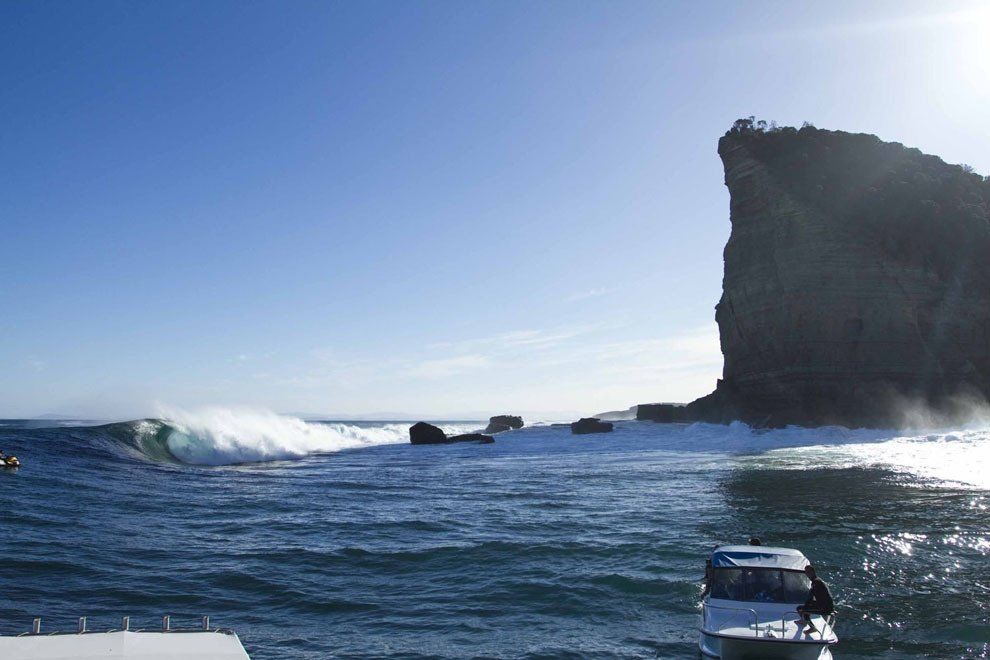

Shipstern Bluff
A fearsome and remote slab under imposing cliffs. A long walk in or boat trip, surfing Shipsterns is commiting, even before you try and catch a wave and deal with the ledges! Rare exposure to strong SW groundswell ensures that Shipsterns is one of Tasmania’s biggest waves!
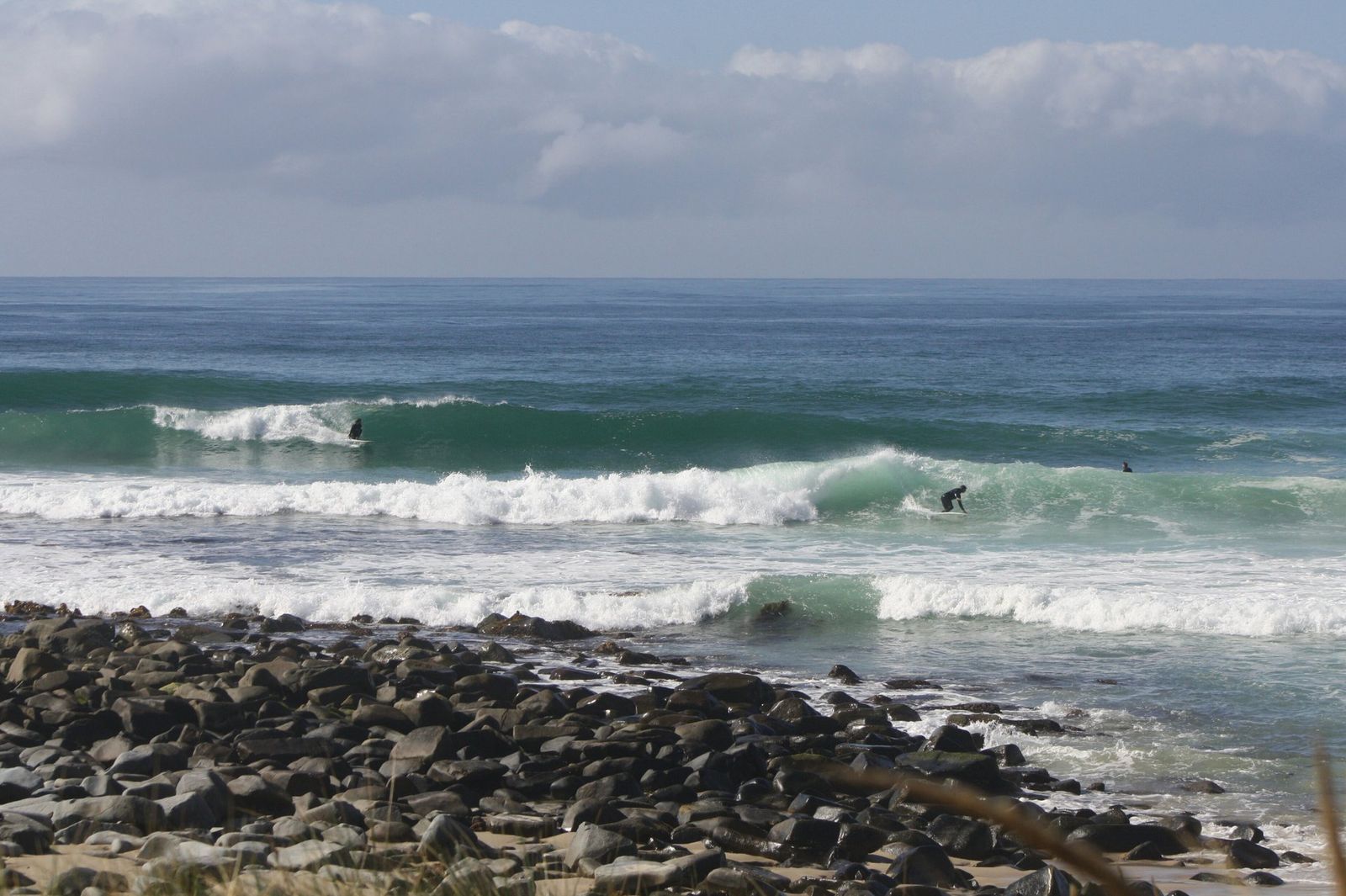

Bicheno and East Coast
A coast of white sand, gin clear waters and granite headlands, the East Coast offers heaps of fun, especially in the summer months when North East swells push down from the Tasman Sea.
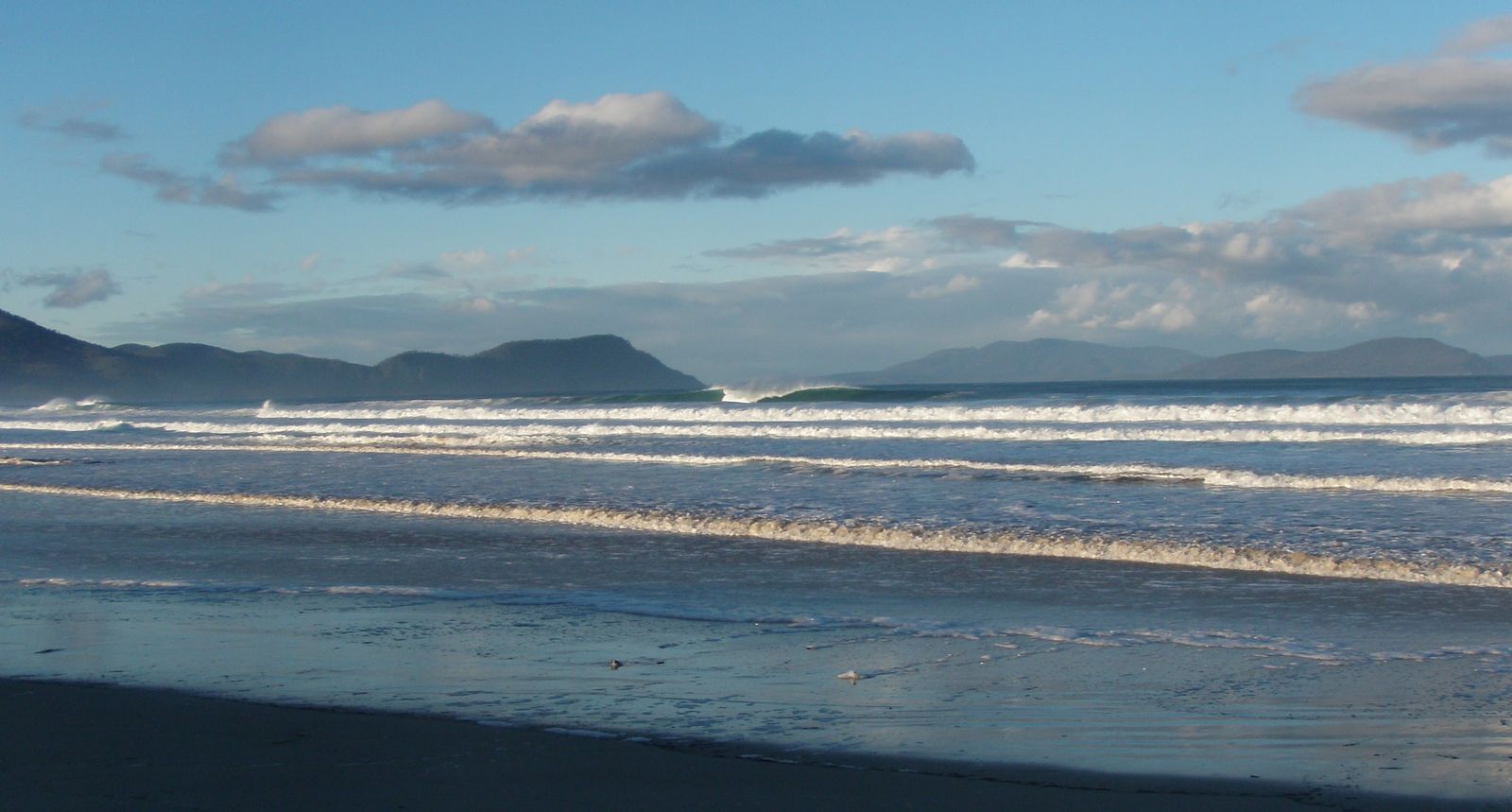

Tasman Peninsula
Between Hobart and the East Coast is the Tasman Peninsula. A wave rich yet complex coast with a variety beaches with different exposure to swell and wind, meaning you can often find a wave but there might be some driving to find it.
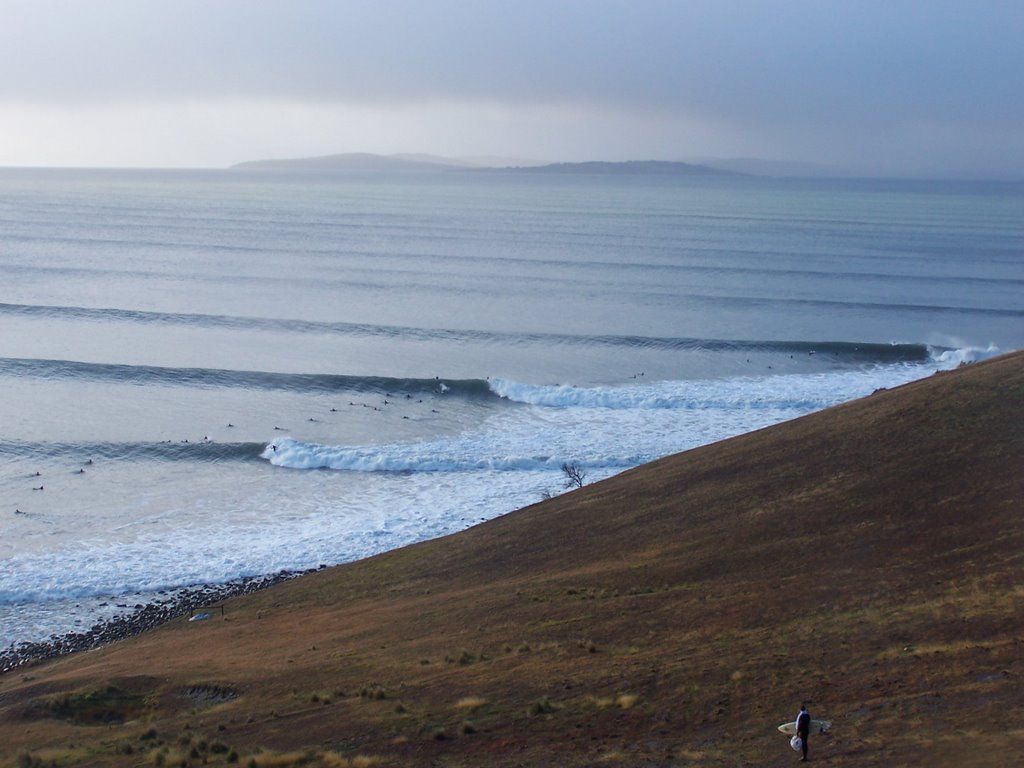

Hobart and Surrounds
The coast around Hobart is intricate, with deep bays and a variety of beaches and points with some exposure to South to SW swells. East of Hobart offers the beaches of Clifton as well as some hidden waves that only break on the biggest swells. South of Hobart is Bruny Island with long beaches and some very special sandbars. Explore and you will find!
When to go
From December to February is Australia’s summer, so if you’re looking to wear your bikini or board shorts, make sure it’s within these months. March to May is Australian autumn, so you might want to consider layering up. For winter, which is June to August, you definitely want to put a steamer on, as waters can drop below 16 Celsius. In the spring (September to November), you can rely on your spring suit or short armed steamer.
The Country
Australia has six states and two territories with temperatures ranging from below 0 to 50 degrees Celsius.
The continent boasts over 30,000 km of coastline and has waves absolutely everywhere.
Australia is the ultimate surf destination for surfers of all abilities, with something for everyone.
Getting There
You will most likely enter Australia using one of its big international airports in Sydney, Melbourne, Perth, Brisbane, Adelaide or Gold Coast.
Whatever your point or entry, these are beautiful getaway cities that will allow you to travel up or down the coast to search for your perfect wave. Alternatively, hop on a domestic flight to get to your final destination.
Travel Information
Time Zone
Australian Western Standard Time (UTC+8), Australian Central Standard Time (UTC+9:30), and Australian Eastern Standard Time (UTC+10)
Currency
Australian Dollar AU$
Calling code
+61
Electric
230 Plug type V, 50 Hz





